The Second-Gen Acura NSX Redemption Arc Begins With the Type S
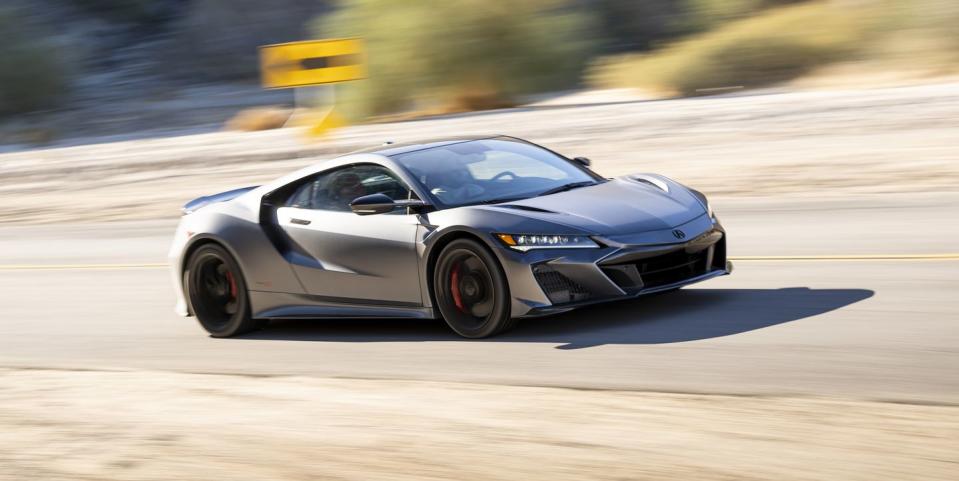
This is it for the second-generation NSX. Acura's hybrid supercar ends with this, the Type S. Only 350 will be produced with 300 earmarked for the United States where, let’s remember, this NSX is built. After they're bonded and screwed together, the wait for a third NSX, probably an EV, begins.
In many ways, the "new" NSX will be remembered as a failure. Mostly because Acura/Honda’s near decade-long tease of it was relentless and agonizing.
First previewed in 2007 as the Advanced Sports Car Concept, Acura promised it would be in production by 2010, though it was actually another eight years before it arrived. In that time, it went from being an all-wheel drive coupe with a V-10 (!) mounted up front, to a hybrid all-wheel drive supercar, first with a naturally aspirated V-6 mounted transversely, then with a twin-turbo V-6 mounted longitudinally. All through this protracted and indecisive development, the NSX was hinted at endlessly. And the persistent delays left enthusiasts feeling like it would never arrive. Finally at the 2015 Detroit Auto Show, the production NSX debuted, where it was comprehensively overshadowed by the surprise reveal of the new Ford GT.
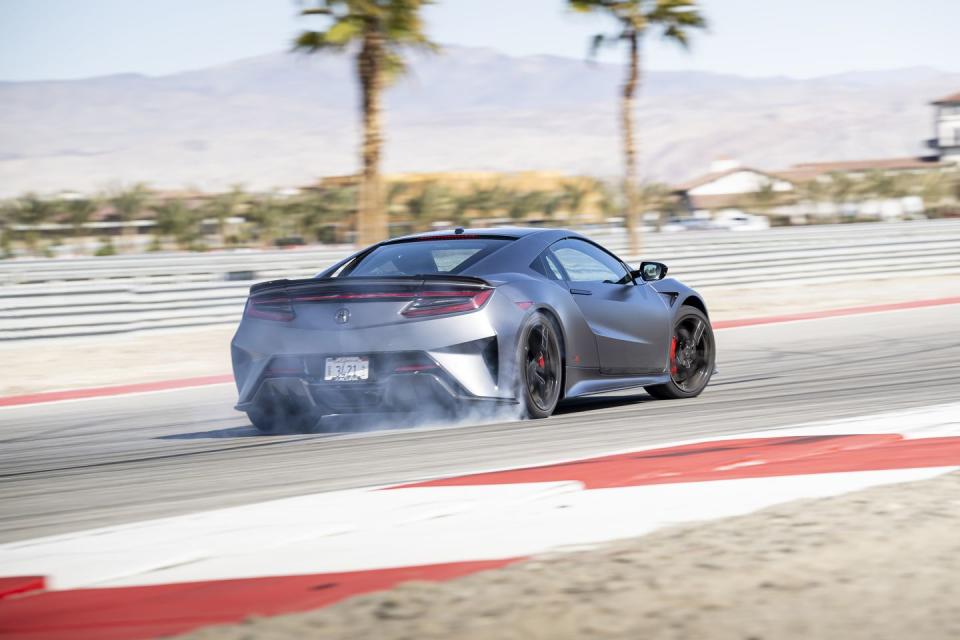
We brought the Type S to the Thermal Club near Palm Springs for a 3-Lap Review video. It was reviews editor Mack Hogan who asked the question in our minds: "When does the NSX redemption arc start?"
Throughout automotive history, there are many examples of enthusiast cars coldly received by customers when on sale that transformed into cult classics (incidentally, many of them Japanese). The MkIV Supra, the FD RX-7, the 2005-2006 Ford GT, the Lexus LFA, and the Porsche Carrera GT all have had legacy rehab, and all are now worth big money. Will the second NSX's talents be appreciated after it's gone?
Honda and Acura did not cut corners in the development. Its platform obviously isn't shared with any other Honda product, and neither is its engine. The V-6 is not simply an Accord unit with two turbos, despite sharing a cylinder count and a 3.5-liter displacement. It's entirely bespoke, with a novel 75-degree cylinder bank. The twin-motor front-drive unit is unique, as is the nine-speed dual-clutch transmission, both Honda developments. It's anyone's guess as to exactly how much all this cost, but tens of millions is a reasonable if extremely rough guess. We do know how much the NSX's Ohio factory cost—$70 million.
It's a polarizing car, dogged by mixed reviews its whole life (though it did win R&T’s 2017 Performance Car of the Year title). While journalists and enthusiasts debated its merits, customers weren't flocking to Acura dealers. By the time Type S production ends, just over 2900 units of the second-generation NSX will have been built. Today's extraordinary car market has changed things, but before the pandemic, many Acura dealers were offering deep discounts on the NSX to shift units. And Acura itself cut prices. The fully loaded Type S you see here has an MSRP around $10,000 lower than the similarly equipped model Acura loaned us for a few months in 2017, despite the newer car's $6000 Gotham Gray Matte paint. That $70 million factory started making limited-edition versions of normal Acura models in a move that seemed like a way to simply fill capacity, though the automaker never said as much.
Few people wanted a near-4000-pound hybrid all-wheel-drive supercar wearing an Acura badge. Similar money could get you a Porsche 911 GT3 or Turbo, an Audi R8, a McLaren 570S, or even a Lamborghini Huracan. Plus any number of great used supercars.
In an interview with Motor Trend last year, Acura head Jon Ikeda said that the NSX wasn't built to make money, but as a halo product with technology that would influence future models. And to be fair, the Type S sold out quickly—thanks to the 300 sold here, 2022 should be the second-best sales year for the NSX—and the NSX GT3 race car program has been a success. But even if Acura says it didn't expect to make money on the car, the question then becomes "How much did you expect to lose, and was it this much?"
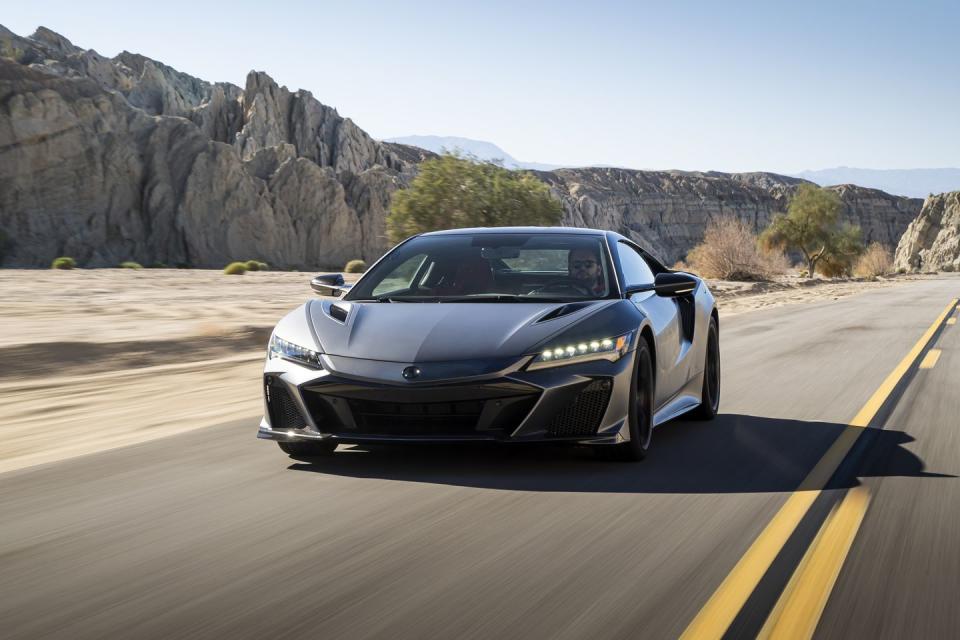
At Thermal, the NSX’s talents were on full display. This NSX is an engineering masterpiece, a car that, despite having an internal combustion engine and three electric motors—the third is sandwiched between engine and gearbox—feels totally cohesive. Even the by-wire brake pedal feels fully natural. If you didn't know it was anything extraordinary, you couldn't tell it was anything other than ordinary. NSX engineers deserve all the credit for making it work seamlessly. Anecdotal evidence and our own 20,000-mile test back in 2017 suggest that the NSX is as reliable as any Honda product, too. Which is to say, totally.
Like the original, the second-gen NSX is easy and pleasurable to use. It's no harder to drive slowly than any Honda product, and the view is excellent by supercar standards, with thin A-pillars and a low cowl. It's much more daily usable than a Huracan or 570S and a better long-distance car, too, despite only having a fairly small trunk behind the engine that has a tendency to get toasty.
The Type S is a worthy upgrade. Its engine gets larger turbochargers from the GT3 race car and a tune, bringing output to 520 hp, 20 more than the base model. (Total output with the electric motors rises from 573 in the base car to 600 in the Type S.) I don't know if you can feel the extra kick of those new turbos without driving both variants back-to-back, but you can hear them more prominently in the Type-S, and perhaps that's all that truly matters. The blowoff valve sound when coming off throttle is addictive. Acura says the dual-clutch transmission shifts quicker, though the gains are marginal because the base car's transmission was already lightning quick. Other changes are more subtle. The gear ratio for the front-drive unit was lowered for quicker acceleration, wider forged wheels come standard, and there's a new tire, a bespoke Pirelli P-Zero PZ4. The MagneRide dampers also get a new tune.
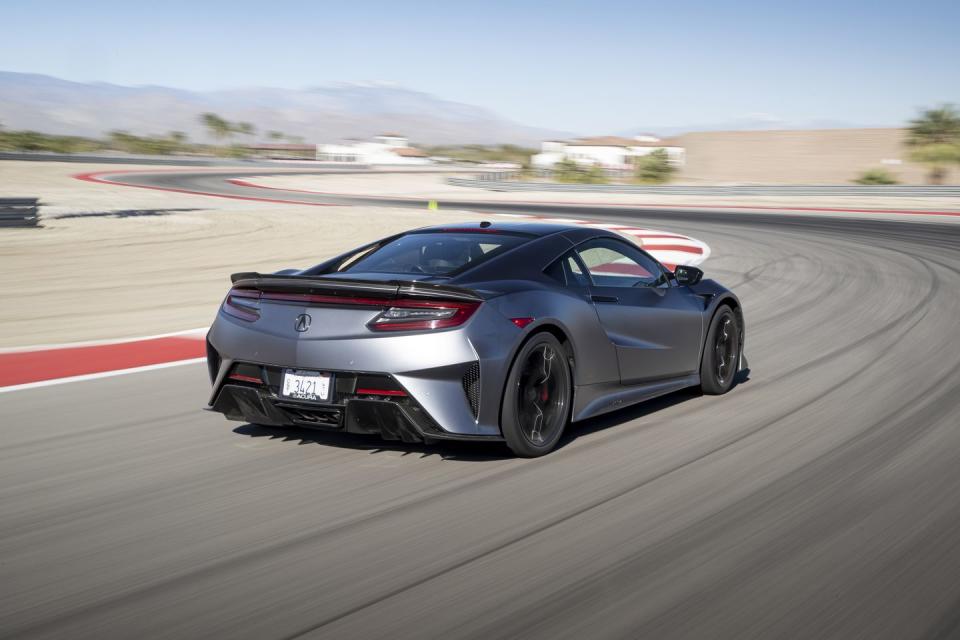
This isn't a comprehensive rework of the base car. In Porsche terms, think Carrera GTS, not GT3. Still, the Type S is excellent on track, where the hybrid system comes alive. With each front wheel driven independently of the other, getting the most out of the NSX requires a different approach. Getting on power early can overspeed the outside front wheel and drag the inside wheel, increasing agility. A big lift mid-corner helps turn the car, too, and feeling the system work is freaky. In a good way. The car just does things you think it shouldn't.
Want traditional sports-car sensations? Look elsewhere. That was always my issue with the NSX. It's an amazing machine, though it never engaged me like the 570S or the Porsche 911. I reject the idea that the new NSX was a radical departure from the original—both were showcases for Honda's bleeding-edge engineering, and the view of the first NSX as being "analog" came in retrospect. But, I can't deny that the original NSX is a more involving machine. Any time I drove a new NSX, I came away respecting the car, though not loving it.
But just because you don't love a car after a short exposure doesn't mean you won't love it long term. A McLaren 570S is a real thriller, but I could see how owning one could be a giant hassle. The new NSX is an eminently usable thing, a daily driver supercar just like its predecessor. Owning one and using it for everything from errands, to road trips, to track days would be an absolute pleasure. And you know that it'll stand up to that abuse.
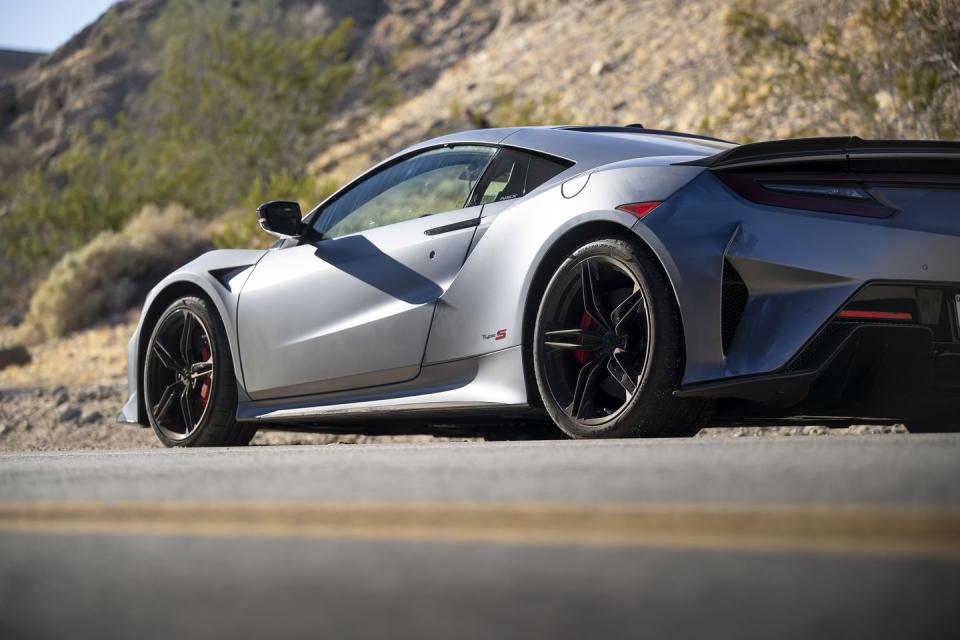
The redemption arc starts now. There are only a small number of these cars out there, and they represent an amazing ownership proposition. Doubly so with the Type S, which, unsurprisingly, is the pick of the range by offering more performance on road and track, without compromising usability one bit.
Perhaps with time, this NSX won't be known as a failure, but instead, a cult classic. I'm not in a position to provide financial advice, and I have no idea if NSX values will rise like crazy, now that it's gone. But this is a desirable car, and its appeal isn't going to diminish soon.
You Might Also Like

 Yahoo Autos
Yahoo Autos 